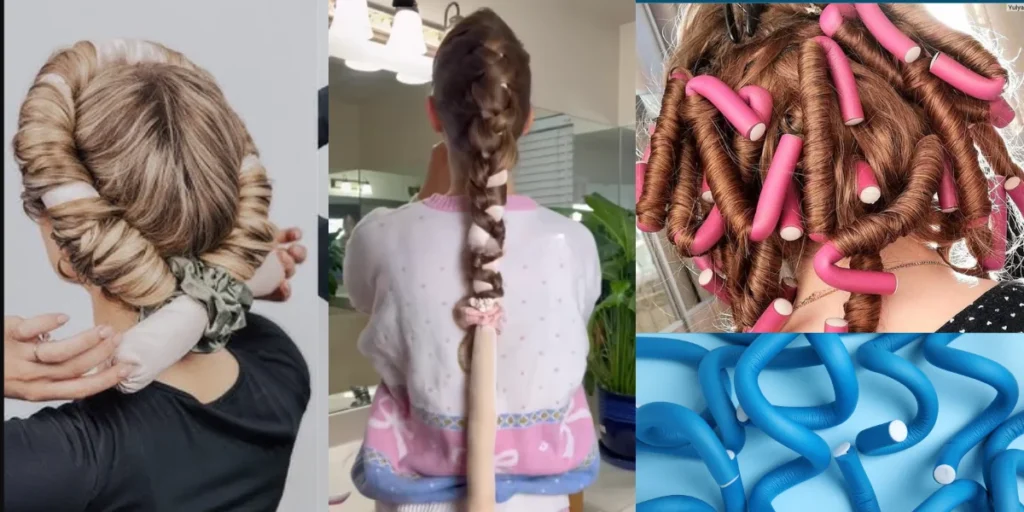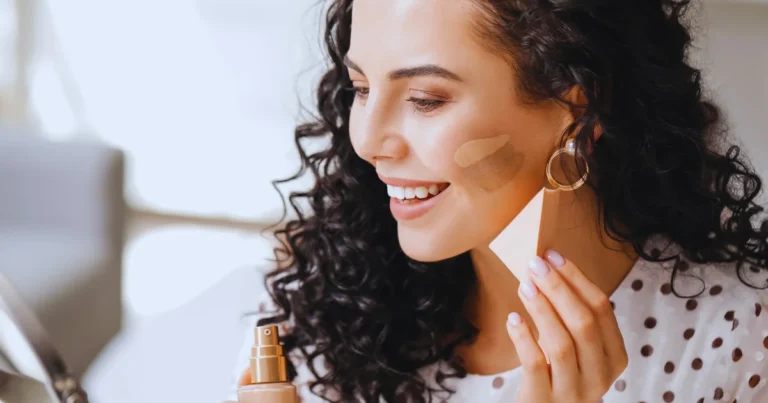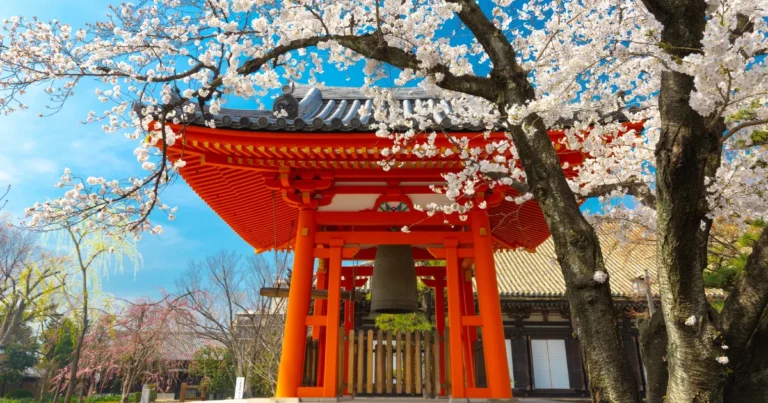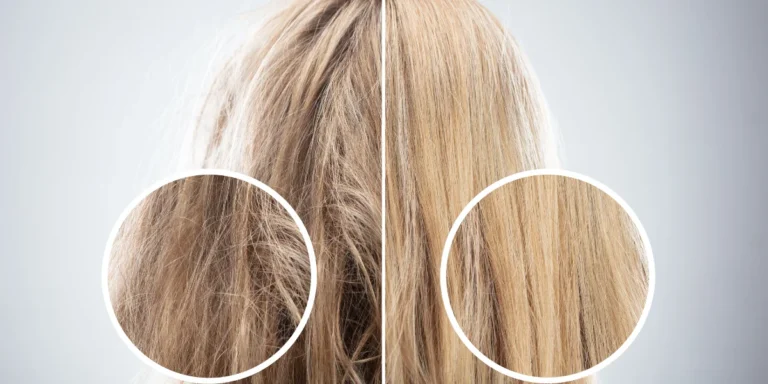Mastering Haircare: Shield Your Hair from Heat Damage
Haircare is essential for maintaining healthy, beautiful locks. However, frequent heat styling can lead to damage, including dryness, breakage, and split ends. To maintain healthy and vibrant hair, it’s essential to incorporate a heat-protection haircare routine. In this comprehensive guide, we’ll explore effective tips and strategies to safeguard your hair from the harmful effects of heat styling.

Understanding Heat Damage:
Heat damage occurs when excessive heat is applied to the hair, causing structural changes that lead to dryness, brittleness, and hair breakage. The high temperatures from styling tools can weaken the hair’s protein structure, resulting in damage that affects both the appearance and health of your hair.
1. Invest in Quality Heat Protectant Products:
Investing in a quality heat protectant is crucial for safeguarding your hair against heat damage. Look for products that provide heat protection and additional benefits such as hydration, shine enhancement, and frizz control. Opt for formulations that are lightweight and non-greasy to avoid weighing down your hair.
Additional Tips:
- Choose a heat protectant with UV protection to shield your hair from the damaging effects of the sun.
- Look for products containing natural ingredients like argan oil, jojoba oil, or keratin, which help strengthen and protect the hair shaft.
- Apply heat protectant generously, ensuring thorough coverage from roots to ends, especially if you have long or thick hair.
- Don’t forget to reapply the heat protectant if you’re restyling your hair or exposing it to heat multiple times throughout the day.
2. Choose the Right Heat Styling Tools:
Investing in high-quality heat styling tools is essential for minimizing heat damage and achieving optimal results. Look for tools that feature advanced technologies such as infrared heat, which penetrates the hair shaft more effectively and reduces drying time. Ceramic, tourmaline, and titanium plates are also excellent options as they distribute heat evenly and minimize friction, resulting in smoother, shinier hair.
Additional Tips:
- Look for heat-styling tools with automatic shut-off features to prevent overheating and reduce the risk of fire hazards.
- Consider investing in tools with ergonomic designs and lightweight construction for comfortable, fatigue-free styling sessions.
- Regularly clean and maintain your heat styling tools to ensure optimal performance and longevity. Remove product buildup and debris from the plates or barrels to prevent uneven heating and potential damage to your hair.
3. Limit Heat Exposure:
Reducing the frequency of heat styling is key to protecting your hair from damage. Whenever possible, embrace your hair’s natural texture and minimize the use of heat styling tools. Experiment with air-drying techniques, such as scrunching or twisting your hair with a towel or using diffusers to enhance natural curls or waves.
Additional Tips:
- Embrace heat-free styling methods like braids, twists, buns, or ponytails to create effortless, heatless hairstyles.
- Consider incorporating heatless curling methods such as foam rollers, flexi rods, or overnight twists to achieve voluminous curls without subjecting your hair to heat.
- Experiment with alternative heat styling tools like steam straighteners or hot air brushes, which use gentler heat sources to style your hair without causing as much damage.
4. Use Lower Heat Settings:
Using lower heat settings on your styling tools can significantly reduce the risk of heat damage while still achieving your desired style. Start with the lowest heat setting and gradually increase the temperature as needed, paying close attention to how your hair responds.
Additional Tips:
- Avoid using maximum heat settings unless necessary, as excessive heat can cause significant damage to your hair over time.
- Use a heat-resistant glove or styling mat to protect your hands and surfaces from heat damage when using styling tools at high temperatures.
- Keep the styling tool moving continuously to prevent overheating and minimize the risk of heat damage to your hair. Avoid holding the tool in one place for too long, as this can lead to uneven heat distribution and potential damage.
5. Apply Heat Protectant Before Styling:
Applying a heat protectant before using any heat styling tools is essential for creating a barrier between your hair and the high temperatures. Choose a heat-protectant product that suits your hair type and styling needs, whether it’s a spray, serum, cream, or lotion.
Additional Tips:
- Choose a heat-protectant product with added benefits such as hydration, shine enhancement, or frizz control to address specific concerns while protecting your hair from heat damage.
- Don’t forget to apply heat protectants to your hair extensions or hairpieces if you’re incorporating them into your hairstyle, as they are just as susceptible to heat damage as your natural hair.
- Reapply heat protectant if you’re restyling your hair or exposing it to heat multiple times throughout the day to ensure continuous protection against heat damage.
6. Practice Proper Styling Techniques:
Using proper styling techniques can help minimize heat damage and ensure optimal results when using heat styling tools. Whether you’re blow-drying, straightening, or curling your hair, following best practices can make a significant difference in the health and appearance of your hair.
Additional Tips:
- Invest in high-quality styling tools with advanced features such as temperature control, heat recovery, and automatic shut-off for safer and more efficient styling sessions.
- Use a heat-resistant styling spray or serum in addition to a heat protectant for added protection and long-lasting hold when using heat styling tools.
- Avoid using metal brushes or combs when styling your hair with heat, as they can heat up and cause additional damage to your hair. Instead, opt for brushes or combs made from heat-resistant materials like ceramic or tourmaline.
7. Incorporate Heat-Free Styling Methods:
Giving your hair a break from heat styling by incorporating heat-free methods into your routine can help minimize damage and promote healthier, stronger hair. From simple hairstyles to more elaborate updos, there are countless heat-free styling options to choose from. Experiment with braids, twists, buns, ponytails, and other heatless hairstyles to achieve a variety of looks without subjecting your hair to high temperatures. Whether you’re styling your hair for work, school, or a special occasion, there’s a heat-free hairstyle to suit every occasion and hair type.
Additional Tips:
- Invest in hair accessories like hairpins, clips, and elastics to enhance your heat-free hairstyles and add flair to your look without using heat-styling tools.
- Explore online tutorials, blogs, and social media for inspiration and ideas for heat-free hairstyles suitable for your hair type, length, and texture.
- Don’t be afraid to experiment with different heat-free styling techniques and products to find what works best for you and your hair. Whether you prefer sleek and polished looks or tousled and textured styles, there’s a heat-free hairstyle to suit your style and preferences.

8. Deep Condition Regularly:
Regular deep conditioning treatments are essential for maintaining healthy, hydrated hair and protecting it from heat damage. Deep conditioning helps replenish moisture, nourish the hair shaft, and repair damage caused by heat styling, chemical treatments, and environmental stressors. Incorporate a deep conditioning mask or treatment into your weekly haircare routine to keep your hair soft, smooth, and resilient.
Additional Tips:
- For an extra boost of hydration and nourishment, cover your hair with a shower cap or towel while the deep conditioner is on to trap heat and enhance the product’s effectiveness.
- Consider incorporating weekly or bi-weekly hot oil treatments into your haircare routine to add moisture, shine, and strength to your hair. Choose oils like coconut, argan, olive, or jojoba oil and warm them slightly before applying them to your hair for the best results.
- Don’t forget to use a leave-in conditioner or detangling spray after washing and conditioning your hair to provide additional hydration, protection, and manageability throughout the day.
9. Protect Your Hair While Sleeping:
Even while you sleep, your hair can be susceptible to damage if not properly protected. Investing in the right sleep accessories can help prevent breakage, split ends, and frizz, leaving your hair looking and feeling its best.
Additional Tips:
- Invest in a silk or satin sleep cap or bonnet with adjustable straps or elastic bands to ensure a comfortable and secure fit while you sleep.
- Consider using a silk or satin hair wrap or turban to protect your hair while you sleep, especially if you have long or thick hair that requires extra care and protection.
- Experiment with different sleep accessories and hairstyles to find what works best for you and your hair type. Whether you prefer a loose bun, braids, or a high ponytail, there are plenty of options to choose from to keep your hair protected and looking its best while you sleep.
Bottom Line:
Protecting your hair from heat damage is essential for maintaining its health, strength, and beauty. By following the tips and strategies outlined in this guide, you can minimize the harmful effects of heat styling and keep your locks looking their best. From investing in quality heat-protectant products and choosing the right styling tools to incorporating heat-free styling methods and deep conditioning treatments, there are plenty of ways to safeguard your hair from damage and promote optimal hair health.






